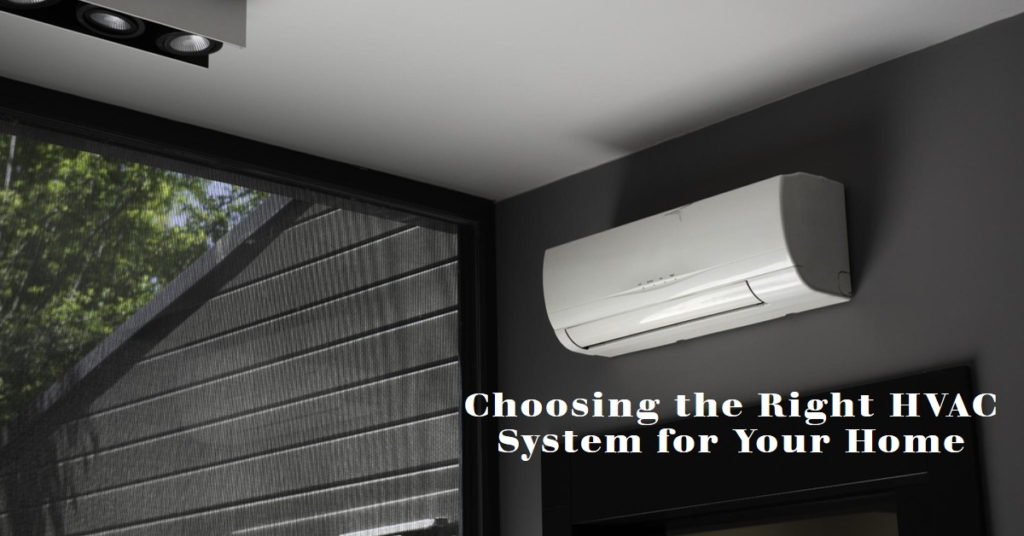
Table of Contents
- Introduction:
- Understanding HVAC Systems:
- Types of HVAC Systems:
- Heating Options:
- Ventilation Systems:
- Energy Efficiency and Ratings:
- Smart HVAC Systems:
- Installation Considerations
- Maintenance and Upkeep:
- Conclusion:
Introduction:
When it comes to ensuring comfort and air quality in your home, selecting the right HVAC (Heating, Ventilation, and Air Conditioning) system is crucial. The ideal HVAC system not only maintains a pleasant temperature but also optimizes energy efficiency, thereby reducing utility bills and environmental impact. This guide will walk you through the key considerations and options available to help you make an informed decision.
Understanding HVAC Systems:
HVAC stands for Heating, Ventilation, and Air Conditioning. These systems regulate indoor temperature, humidity, and air quality. Proper HVAC systems ensure comfortable living environments regardless of external weather conditions. They encompass a variety of components, including furnaces, air conditioners, heat pumps, and air handlers.
A well-functioning HVAC system is essential for maintaining indoor comfort and health. It filters and circulates air, removing pollutants and allergens. Furthermore, an efficient HVAC system can significantly reduce energy consumption, leading to cost savings and environmental benefits. As homes become more airtight for energy efficiency, proper ventilation provided by HVAC systems becomes even more critical.
Types of HVAC Systems:
Central air conditioning systems are popular in larger homes. These systems use a network of ducts to distribute cool air throughout the house. They consist of an outdoor unit (containing the compressor and condenser) and an indoor unit (evaporator coil and air handler). Central air systems are efficient for cooling large spaces uniformly but require regular maintenance to ensure ductwork remains clean and leak-free.
Ductless mini-split systems are ideal for homes without existing ductwork. These systems consist of an outdoor compressor unit and one or more indoor air-handling units. They offer flexibility as each indoor unit can be controlled independently, making it easier to manage temperature in different zones. Mini-splits are energy-efficient and quieter than traditional systems, but installation can be more expensive.
Heating Options:
Furnaces are a common heating option, especially in colder climates. They can run on natural gas, oil, or electricity. Furnaces work by heating air and distributing it through a home’s duct system. They are known for their efficiency and ability to quickly heat a home. However, regular maintenance is crucial to ensure safe and efficient operation.
Heat pumps are versatile devices that can provide both heating and cooling. They work by transferring heat from one place to another – extracting heat from the outside air (even in cold weather) and bringing it indoors. In summer, the process reverses to cool the home. Heat pumps are highly efficient and environmentally friendly, but they may struggle in extremely cold temperatures without auxiliary heating support.
Ventilation Systems:
Ventilation is an often-overlooked aspect of HVAC systems, but it plays a critical role in maintaining indoor air quality. Proper ventilation helps remove contaminants, control humidity, and introduce fresh air into the home. Without adequate ventilation, indoor air can become stale and polluted, leading to health issues.
There are various ventilation systems, including natural ventilation, exhaust ventilation, supply ventilation, and balanced ventilation systems. Balanced ventilation systems, which include heat recovery ventilators (HRVs) and energy recovery ventilators (ERVs), are particularly effective as they exchange indoor and outdoor air while recovering heat and moisture, thereby improving energy efficiency.
Energy Efficiency and Ratings:
When selecting an HVAC system, pay attention to its efficiency ratings. The Seasonal Energy Efficiency Ratio (SEER) measures the cooling efficiency of air conditioners and heat pumps, while the Heating Seasonal Performance Factor (HSPF) rates the heating efficiency of heat pumps. Higher SEER and HSPF ratings indicate more efficient systems, which can lead to significant energy savings over time.
Energy Star-certified HVAC systems meet strict energy efficiency guidelines set by the U.S. Environmental Protection Agency. Choosing Energy Star-rated systems ensures that you are investing in equipment that will reduce energy consumption and lower utility bills. Additionally, many of these systems qualify for rebates and incentives, making them a cost-effective choice in the long run.


Smart HVAC Systems:
Smart HVAC systems integrate with home automation technologies to provide enhanced control and efficiency. These systems allow homeowners to monitor and adjust their HVAC settings remotely using smartphones or other devices. Features such as programmable thermostats, energy usage reports, and automated maintenance alerts help optimize performance and reduce energy costs.
Some popular smart HVAC products include smart thermostats like the Nest Learning Thermostat, Ecobee SmartThermostat, and Honeywell Lyric. These devices learn your schedule and preferences, adjusting the temperature accordingly to maximize comfort and efficiency. They also provide insights into energy usage, helping you make informed decisions about your heating and cooling habits.
Installation Considerations
Proper installation is critical for the efficient and safe operation of your HVAC system. Hiring a certified and experienced HVAC contractor ensures that the system is correctly sized and installed according to manufacturer specifications and local building codes. Professional installers also provide valuable advice on system selection and maintenance.
Installation costs vary depending on the type of HVAC system, the complexity of the installation, and the size of your home. Central air systems and ductless mini-splits typically have higher upfront costs due to the need for ductwork and multiple units, respectively. However, these systems often provide better long-term savings through improved efficiency and lower maintenance costs.
Maintenance and Upkeep:
Regular maintenance is essential to keep your HVAC system running smoothly and efficiently. Simple tasks such as changing air filters every 1-3 months, cleaning the outdoor unit, and ensuring that vents are not obstructed can significantly improve performance. Scheduling annual professional inspections and tune-ups can also prevent major issues and extend the lifespan of your system.
Even with regular maintenance, HVAC systems can encounter problems. Common issues include uneven heating or cooling, strange noises, and increased energy bills. Often, these problems can be resolved by checking and replacing filters, cleaning components, or recalibrating thermostats. However, persistent or severe issues should be addressed by a professional to avoid further damage and ensure safety.
Conclusion:
Choosing the right HVAC system for your home involves considering various factors, including the size and layout of your home, climate, energy efficiency, and budget. By understanding the different types of HVAC systems and their benefits, you can make an informed decision that enhances comfort and reduces energy costs.
Investing in a quality HVAC system and maintaining it properly is a significant step towards ensuring a comfortable, healthy, and energy-efficient home. With advancements in technology and a growing focus on sustainability, modern HVAC systems offer more benefits than ever before. Whether you opt for a traditional furnace and air conditioner or a cutting-edge smart HVAC system, prioritizing quality and efficiency will pay off in the long run.


